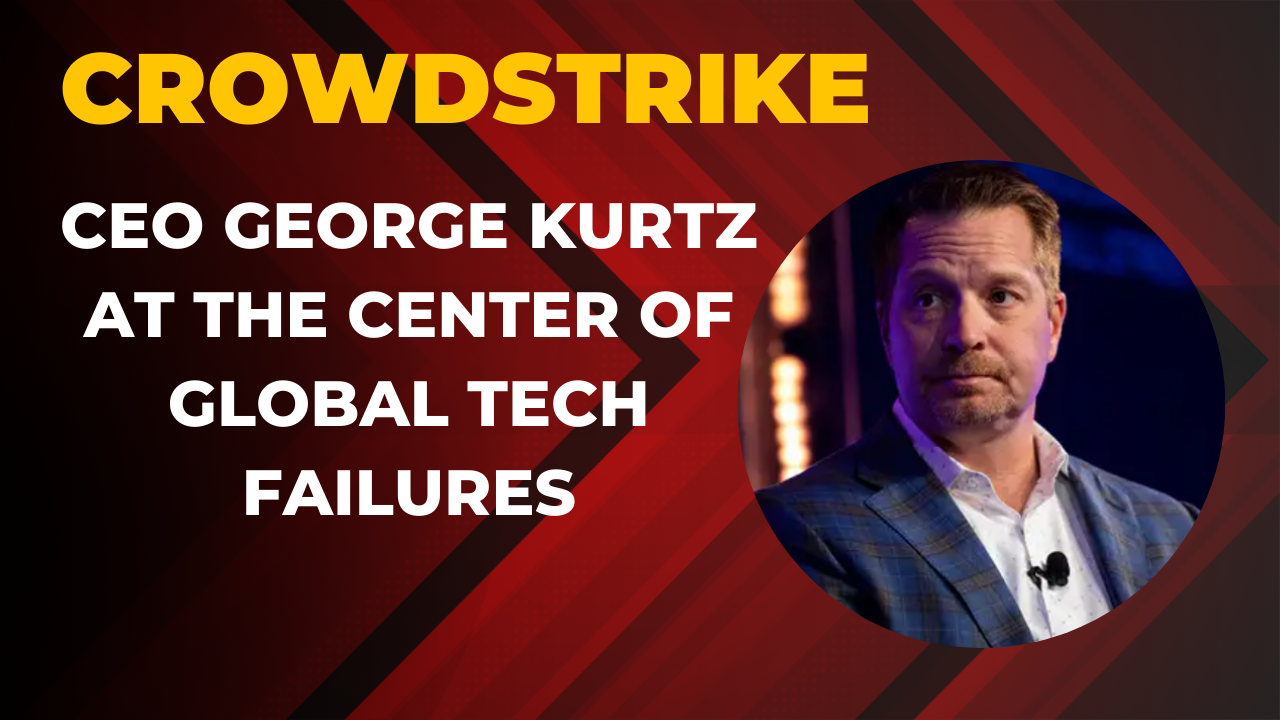**CrowdStrike CEO George Kurtz
At the Center of Global Tech Failures**
George Kurtz, the CEO of CrowdStrike, has once again found himself at the epicenter of a global tech crisis. Known for his leadership in cybersecurity, Kurtz’s career has been marked by both remarkable successes and notable challenges. This is the second time he has been at the forefront of a significant technological failure, underscoring the complexities and high stakes of the cybersecurity industry.
The First Incident: 2017 WannaCry Ransomware Attack
The first major incident that brought Kurtz into the limelight was the WannaCry ransomware attack in 2017. As the leader of CrowdStrike, a company specializing in endpoint protection and threat intelligence, Kurtz was at the helm when the attack wreaked havoc worldwide. WannaCry exploited a vulnerability in Microsoft Windows, encrypting data and demanding ransom payments in Bitcoin. The attack affected over 200,000 computers across 150 countries, disrupting critical services such as the UK’s National Health Service (NHS).
Despite the widespread damage, CrowdStrike’s response under Kurtz’s leadership was swift and decisive. The company provided valuable threat intelligence and guidance to affected organizations, helping to mitigate the impact of the attack. Kurtz’s handling of the crisis earned him recognition for his expertise and crisis management skills, although the scale of the attack highlighted the persistent vulnerabilities in global cyber infrastructure.
The Second Incident SolarWinds Supply Chain Attack
The second and more recent incident that has placed Kurtz in the spotlight is the SolarWinds supply chain attack, discovered in December 2020. This sophisticated cyber espionage campaign, attributed to a state-sponsored group, compromised the software updates of SolarWinds’ Orion platform, widely used by government agencies and Fortune 500 companies. The attackers gained access to sensitive data and systems, posing a severe threat to national security and corporate integrity.
CrowdStrike was once again at the forefront of the response efforts. Kurtz and his team played a crucial role in uncovering the extent of the breach, providing incident response services and collaborating with federal agencies to address the threat. The attack underscored the vulnerabilities in supply chain security and the far-reaching implications of cyber espionage.
Kurtz’s Leadership in Crisis
Kurtz’s leadership during these two incidents has been characterized by a proactive and transparent approach. He has emphasized the importance of collaboration and information sharing in the cybersecurity community to tackle such pervasive threats. Under his guidance, CrowdStrike has consistently advocated for stronger security measures and the adoption of advanced technologies to detect and prevent cyber attacks.
In the wake of the SolarWinds attack, Kurtz called for a reevaluation of supply chain security practices, highlighting the need for greater scrutiny and transparency in software development and distribution processes. He has also stressed the importance of zero-trust architectures, which assume that no entity inside or outside the network can be trusted by default, thus requiring continuous verification of users and devices.
The Broader Implications for Cybersecurity
The recurrence of global tech failures with Kurtz at the helm points to the evolving and increasingly complex nature of cyber threats. It underscores the critical role of cybersecurity leaders in navigating these challenges and the immense pressure they face in safeguarding digital infrastructure.
Kurtz’s experiences highlight several key lessons for the cybersecurity industry
1. **Proactive Defense:** Organizations must adopt proactive defense strategies, utilizing advanced threat detection and response technologies to stay ahead of adversaries.
2. **Collaboration and Information Sharing:** Effective collaboration between private sector companies, government agencies, and international partners is essential for addressing global cyber threats.
3. **Supply Chain Security:** The SolarWinds attack has brought supply chain security to the forefront, necessitating rigorous security assessments and monitoring of third-party vendors.
4. **Zero-Trust Architectures:** Implementing zero-trust principles can significantly enhance security by minimizing the risk of unauthorized access and lateral movement within networks.
George Kurtz’s tenure as CEO of CrowdStrike has been marked by his involvement in two of the most significant cybersecurity incidents of the past decade. His leadership and the company’s response efforts have been critical in mitigating the impact of these attacks and advancing the field of cybersecurity. As cyber threats continue to evolve, Kurtz’s experiences serve as a reminder of the ongoing challenges and the need for relentless vigilance in protecting our digital world.
